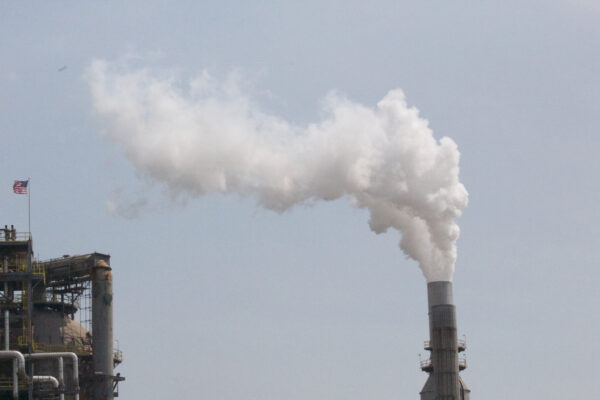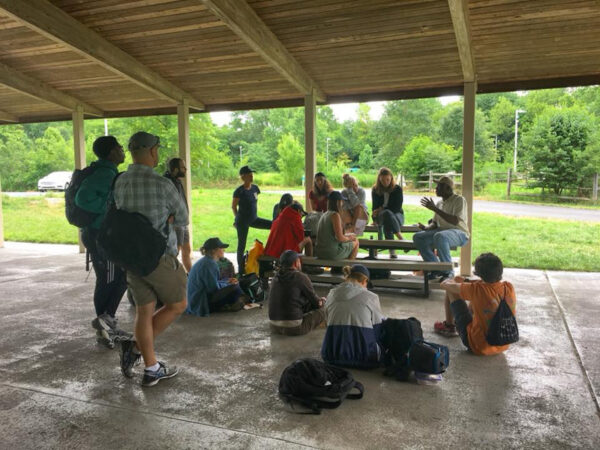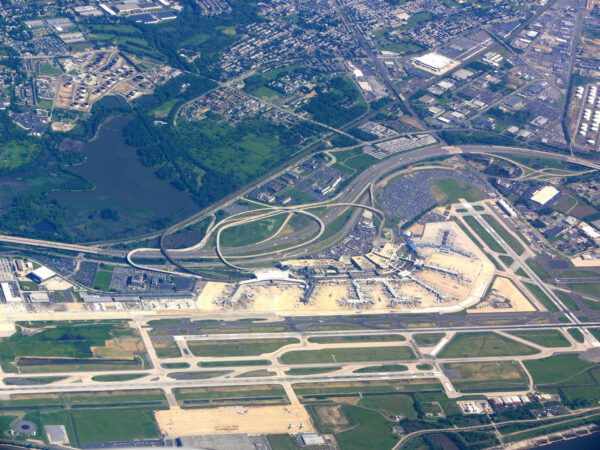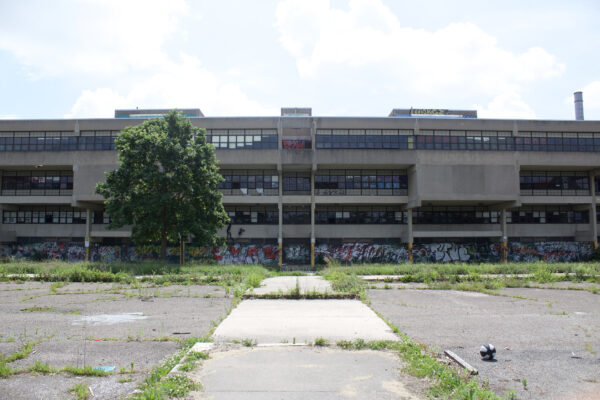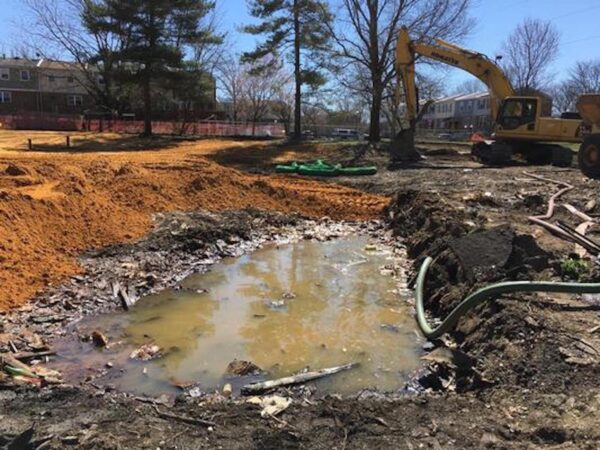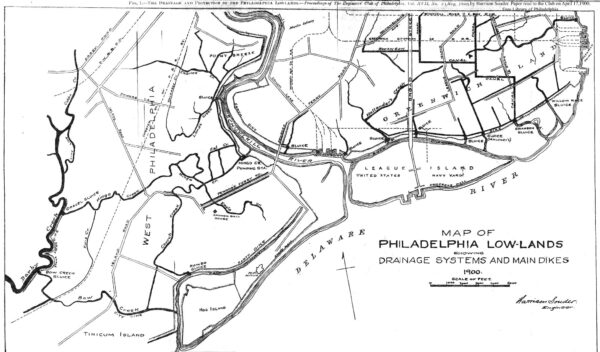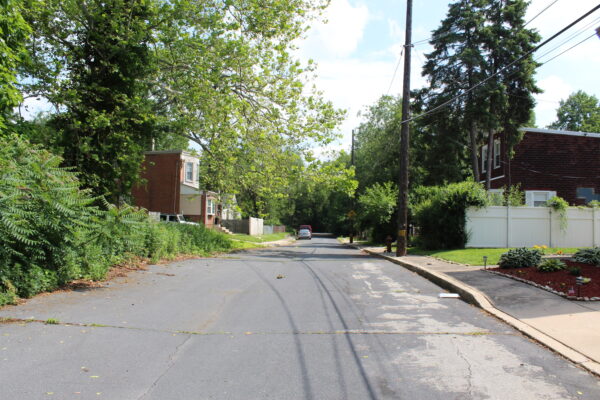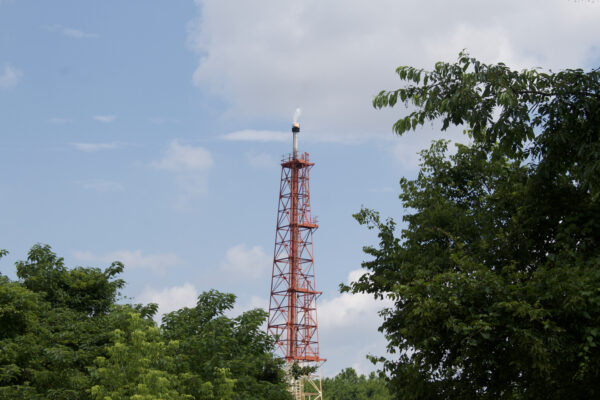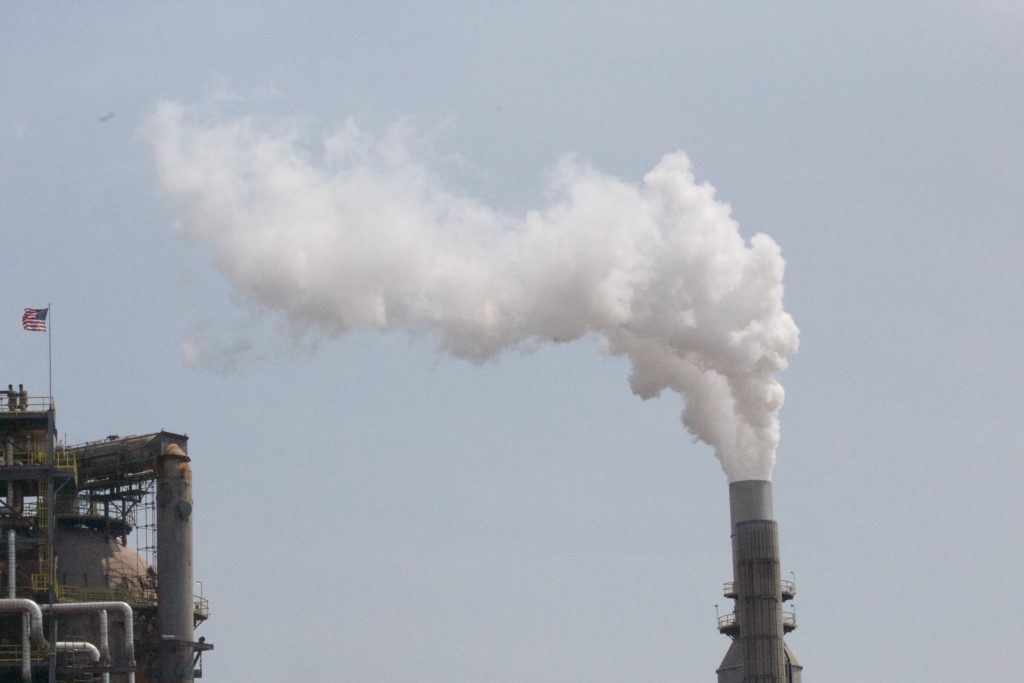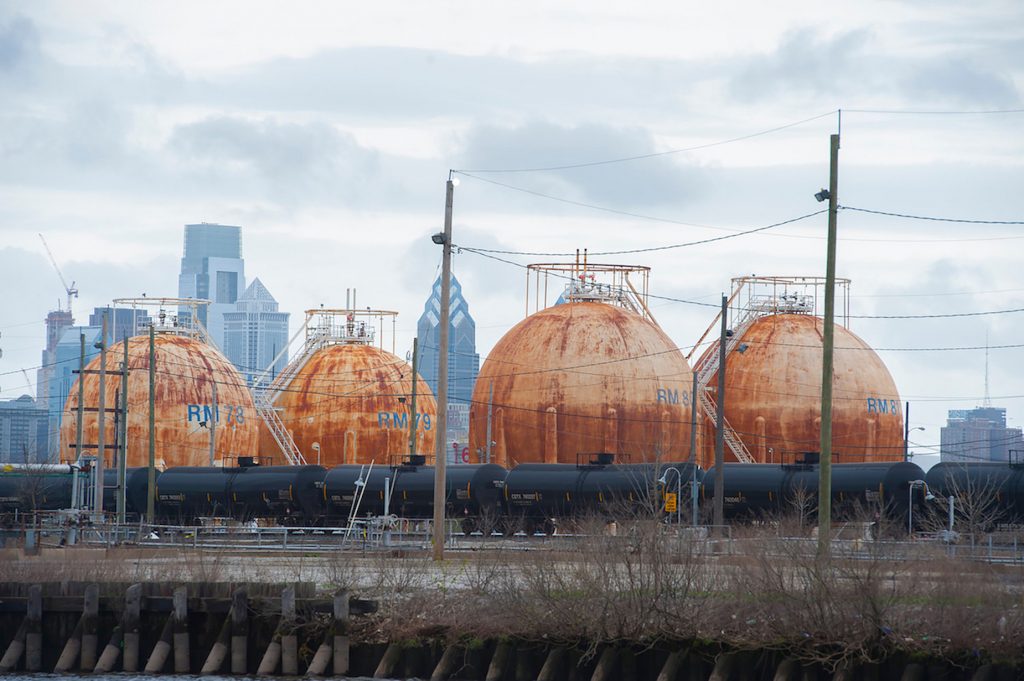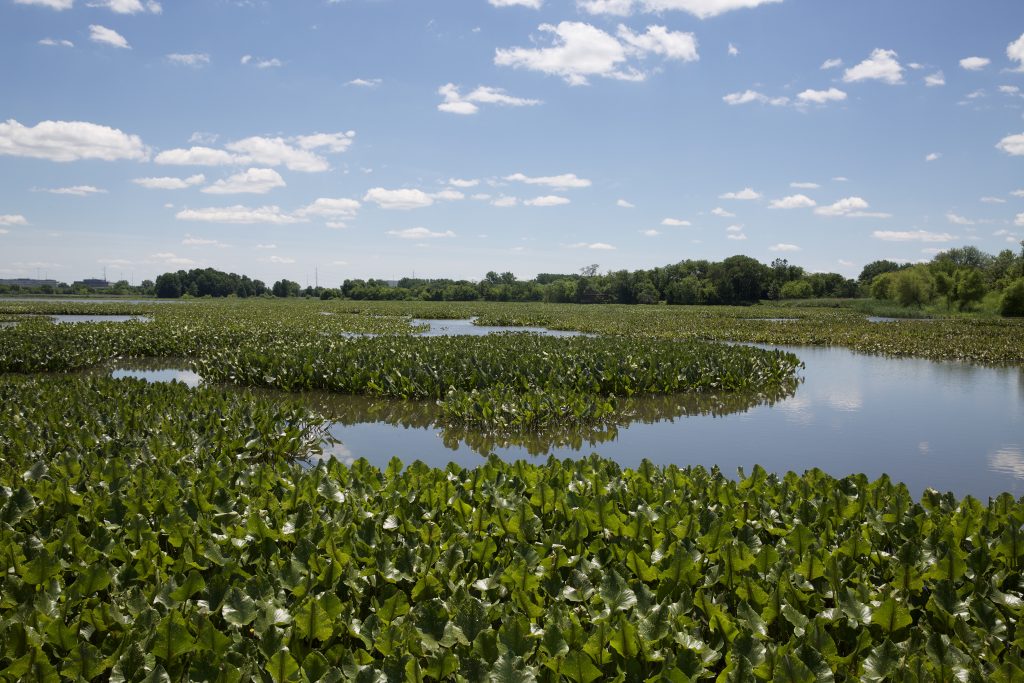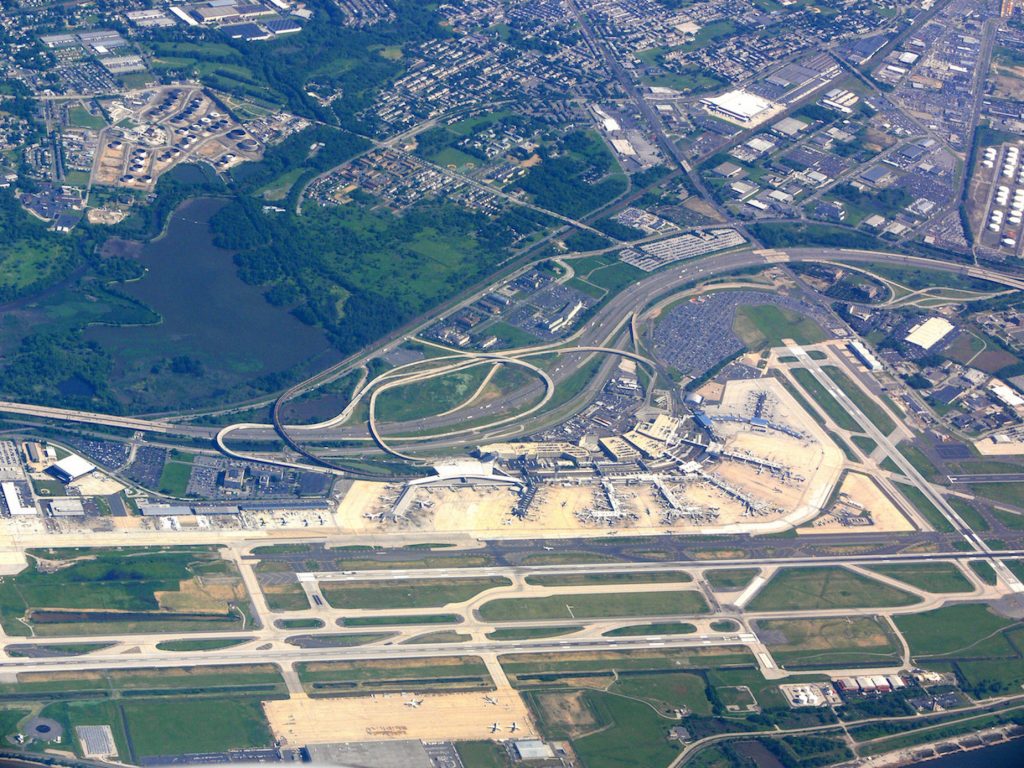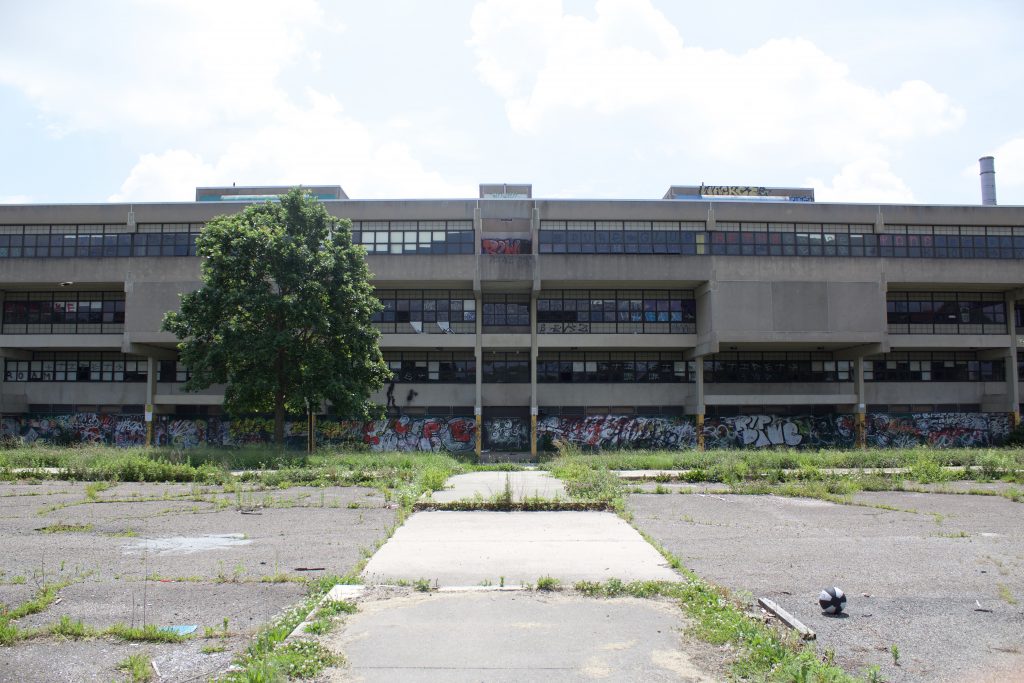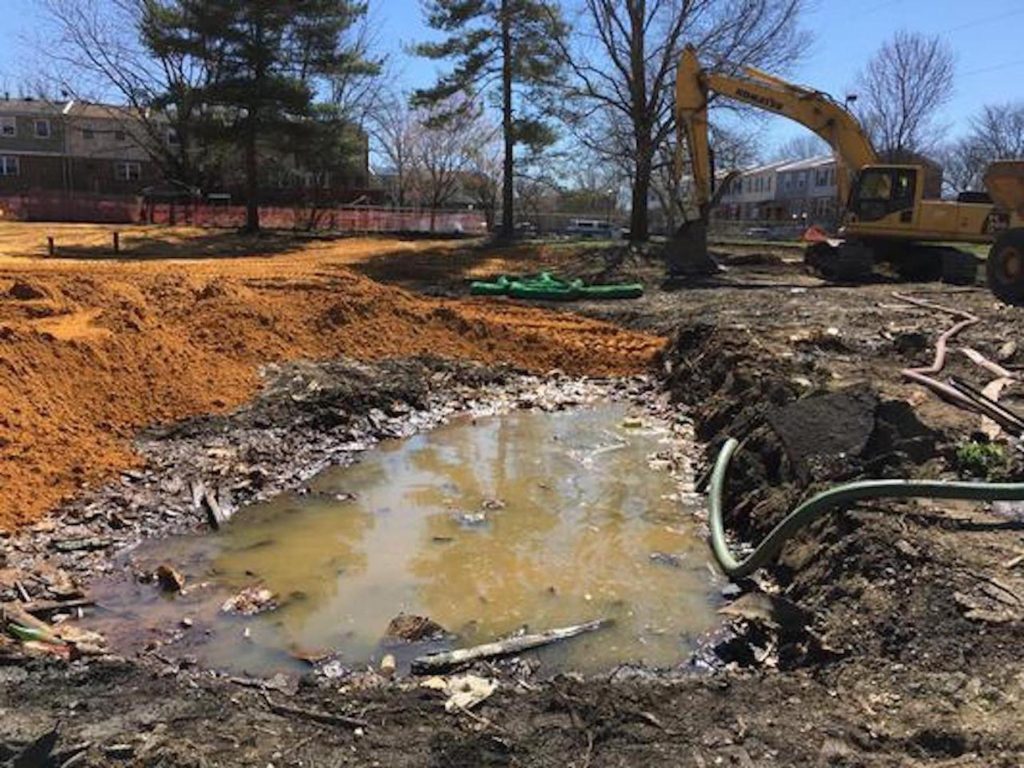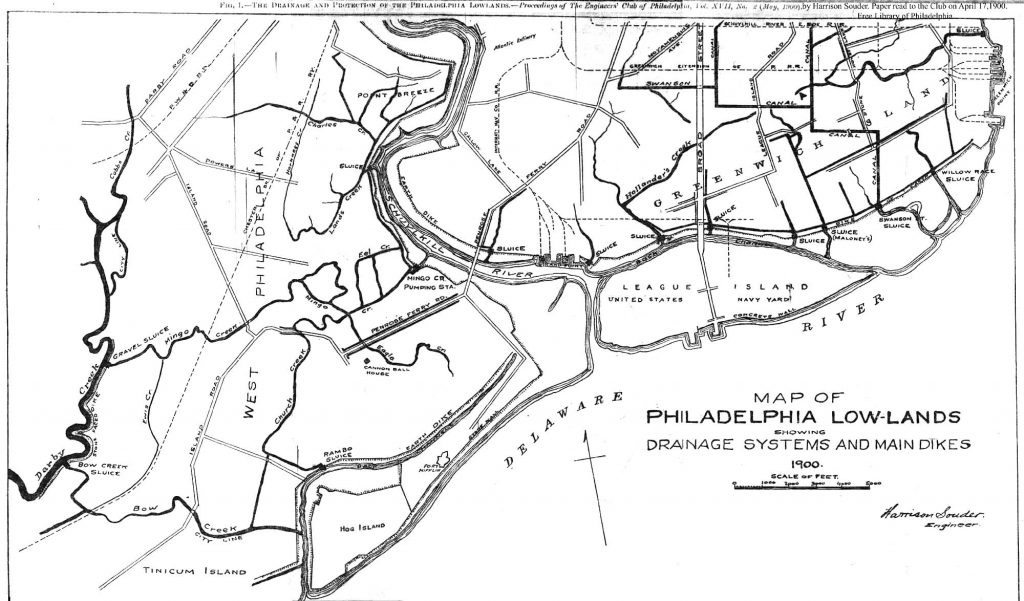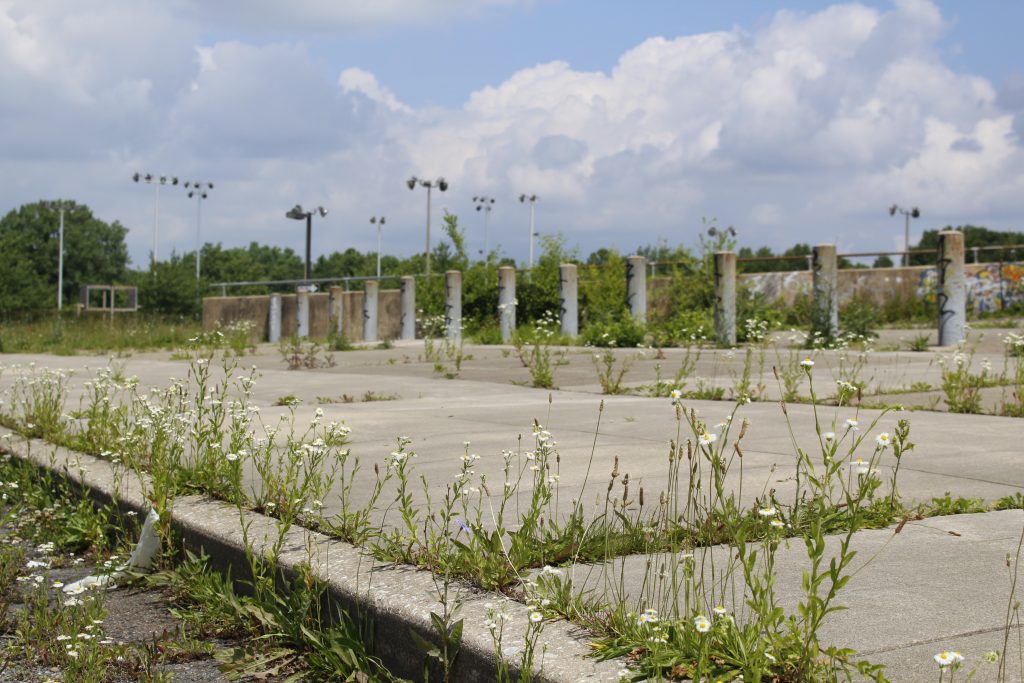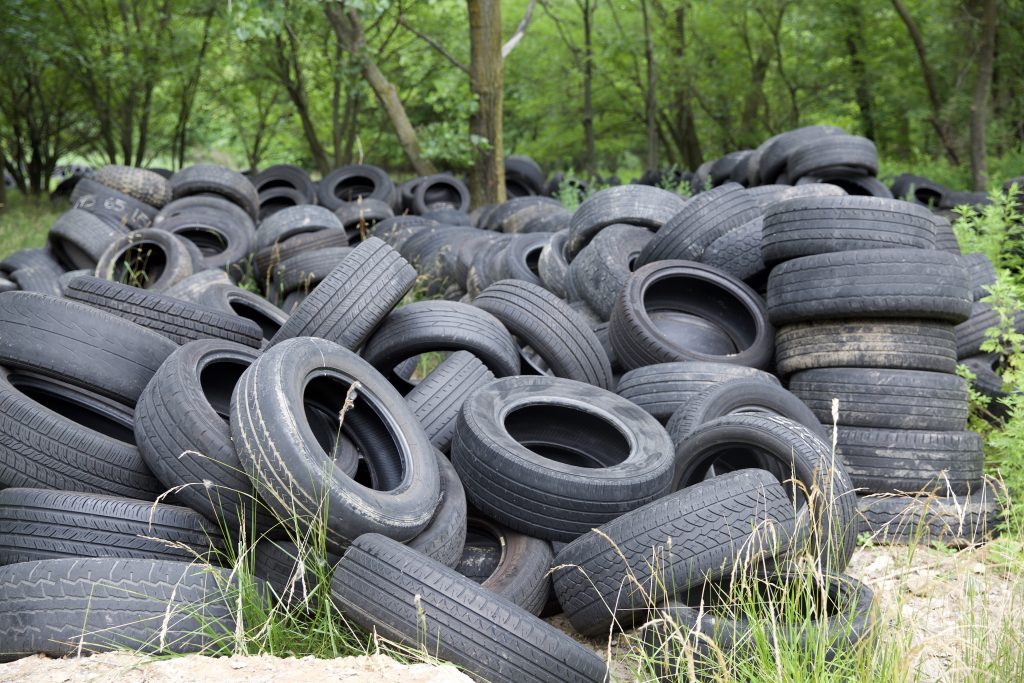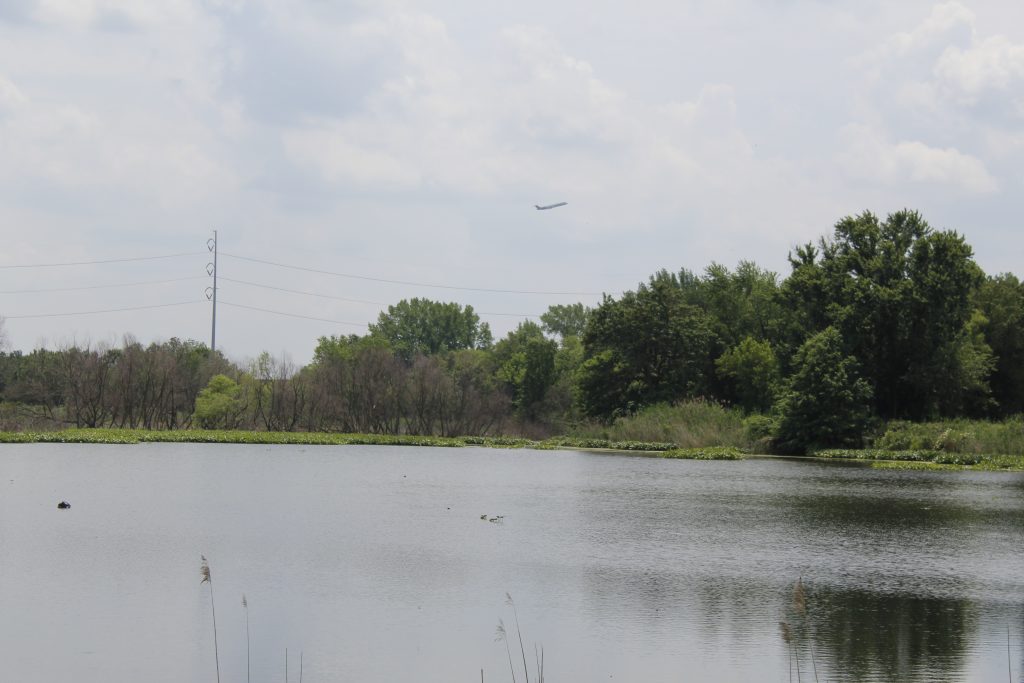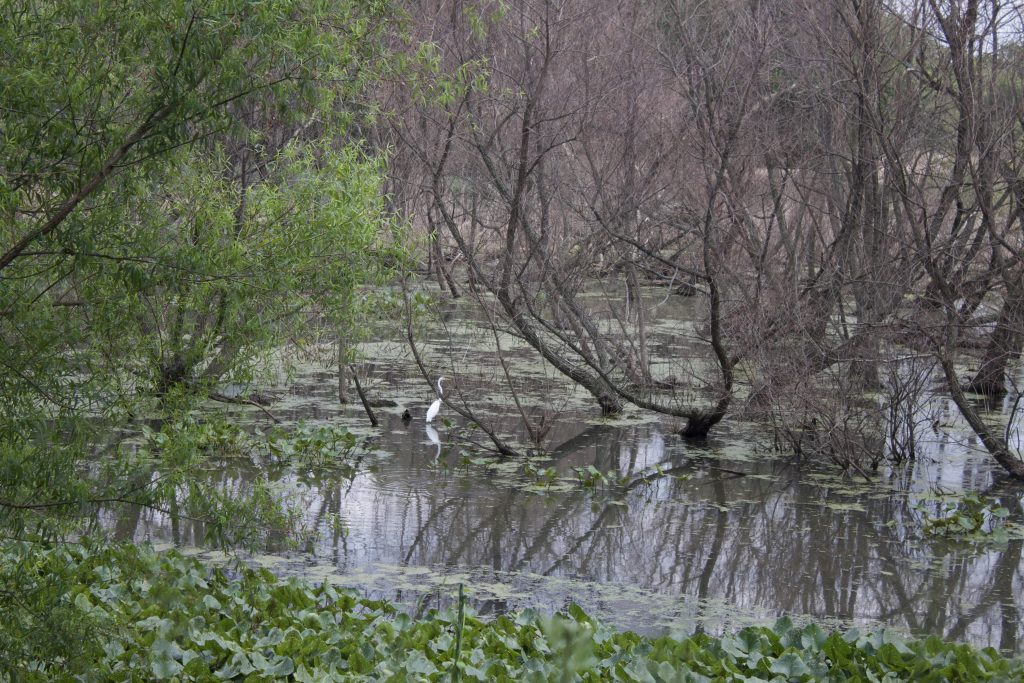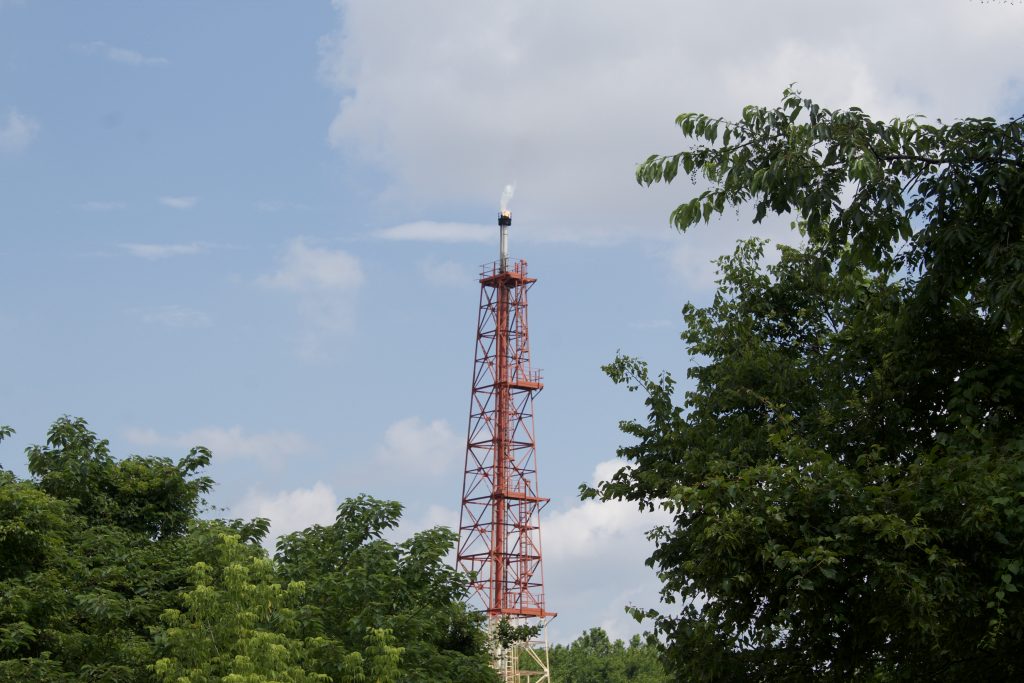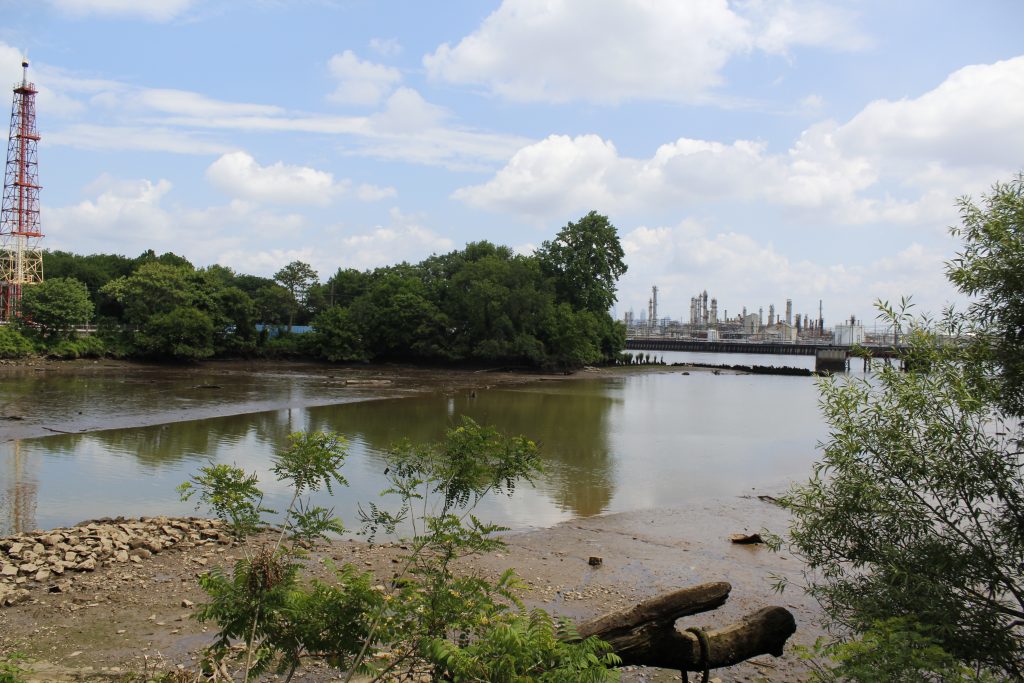2018: Mouth of Mingo Creek with main refinery complex in the distance.
Courtesy of Penn Program in Environmental Humanities
Atop six thousand acres of historic wetlands, between the International Airport and the oldest oil refinery in the US, lies Eastwick—Philadelphia’s lowest-elevation neighborhood. In an era of climate change and sea level rise, Eastwick is increasingly prone to storm surge and nuisance flooding.
Encroachment on Eastwick began in the 1920s, when the Philadelphia International Airport was constructed on the outskirts of the neighborhood. In the 1950s, under the banner of urban renewal, the Philadelphia City Planning Commission displaced nearly half of Eastwick’s residents and radically reduced the extent of flood-mitigating tidal marshland.
Today Eastwick is poised for a new chapter in its history—one in which neighbors collaborate to plan public land use in a climate of increasingly heavy rain events and surging seas. This chapter has already begun. In 2015, Eastwick neighbors stopped unwanted development and won a pledge from the City to include residents in future planning efforts.

